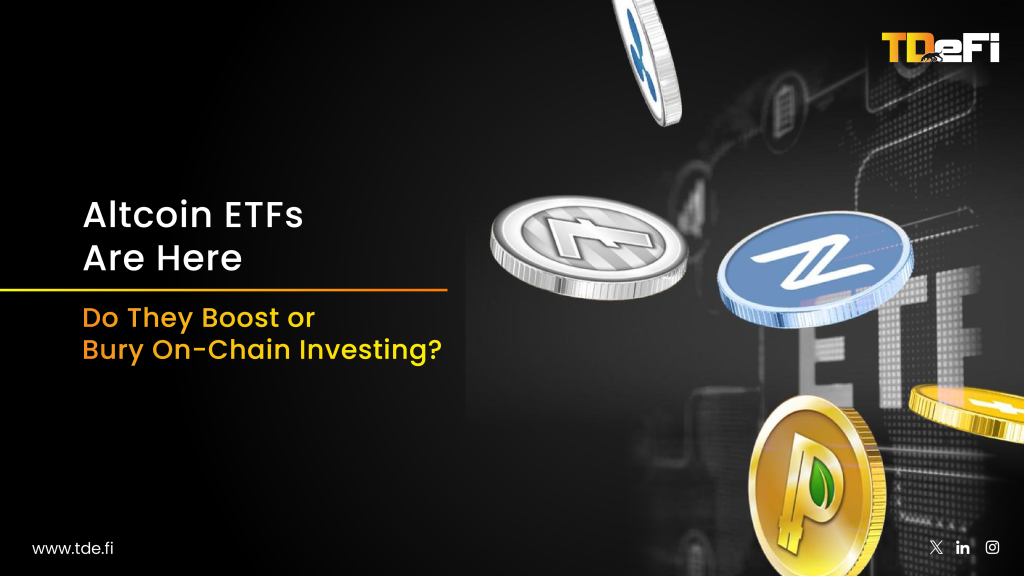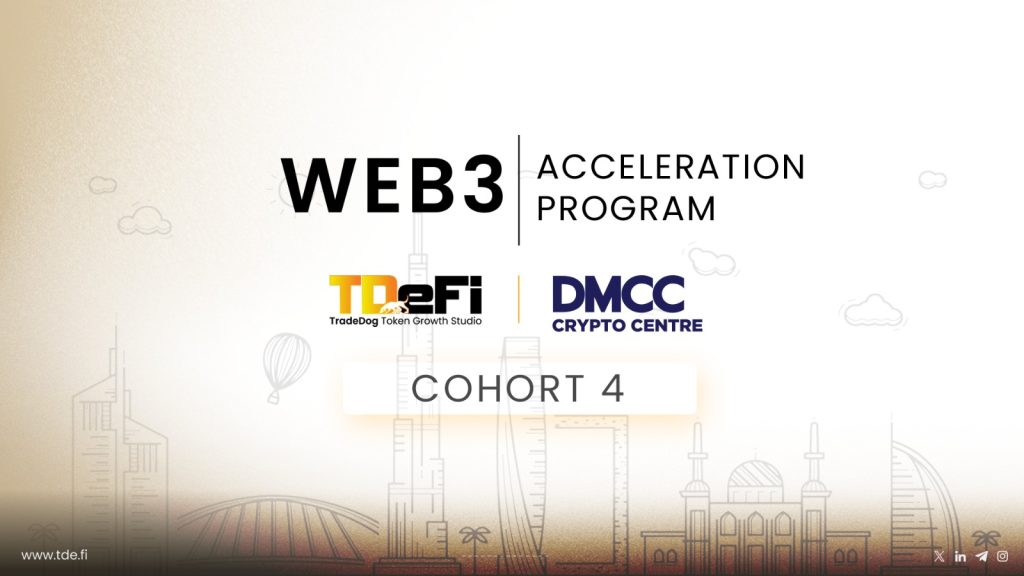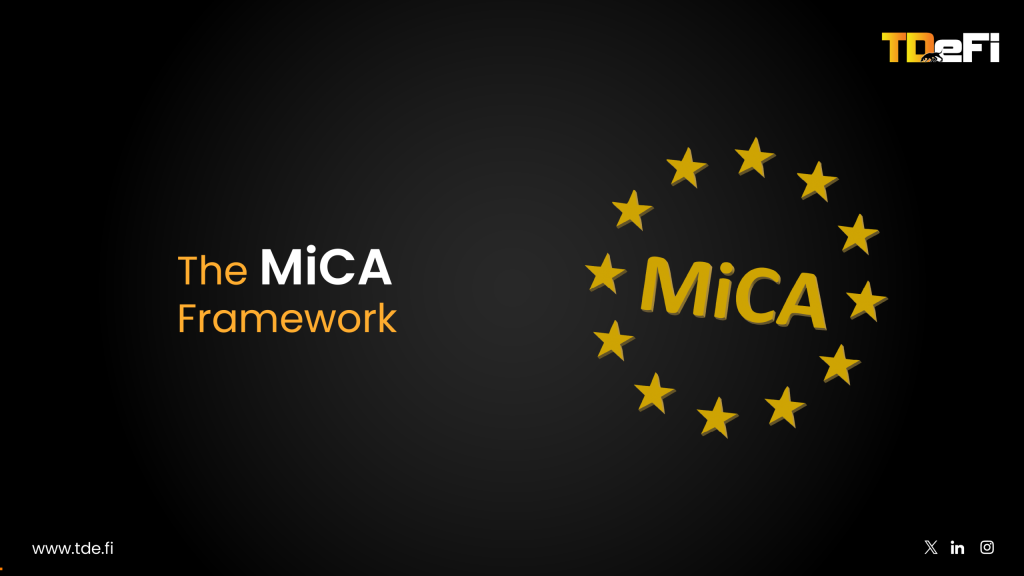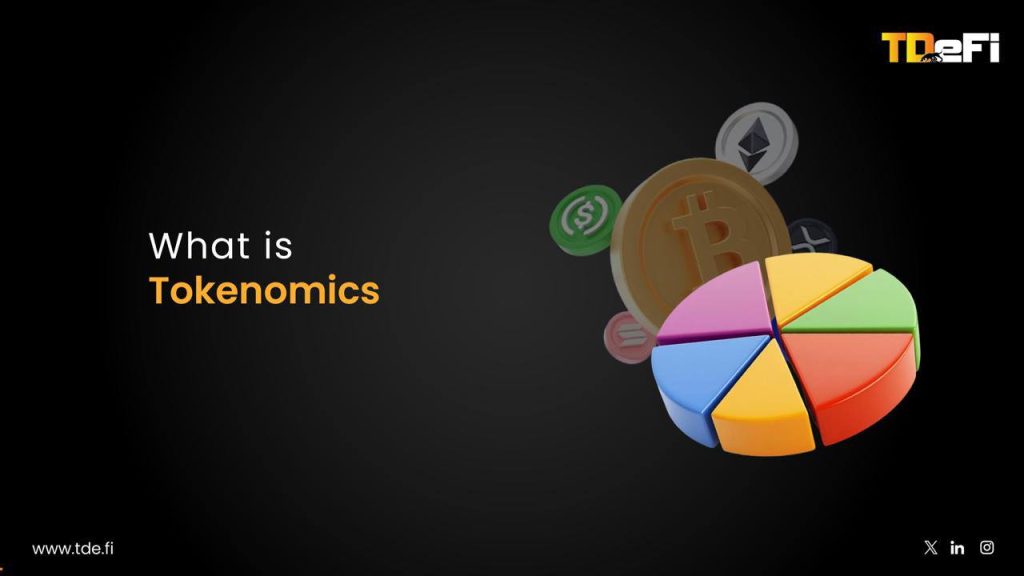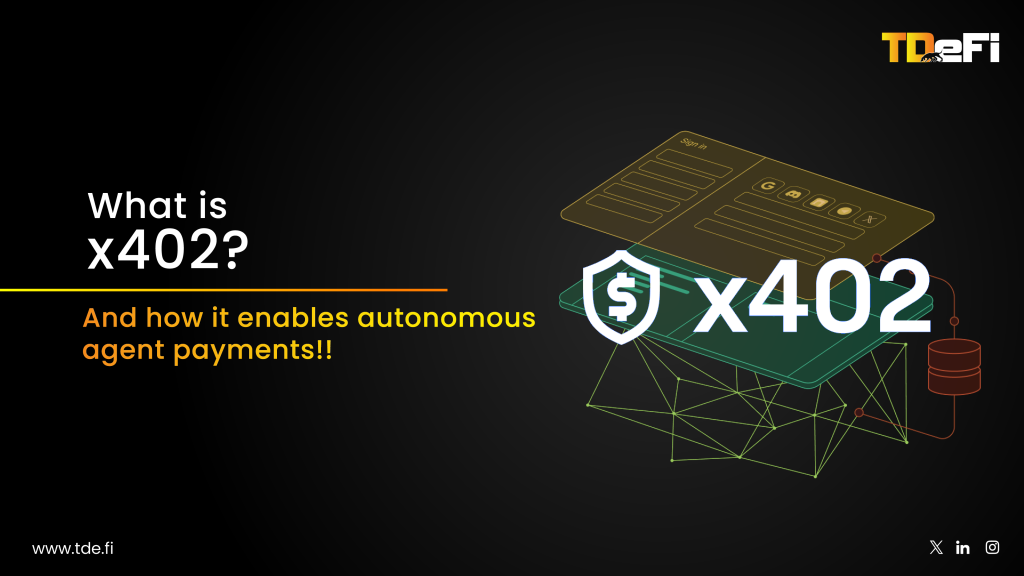TL;DR
The EU’s Markets in Crypto-Assets (MiCA) regulation and parallel global frameworks are fundamentally reshaping cross-border crypto liquidity. While these regulations introduce near-term fragmentation through compliance costs and jurisdictional arbitrage, they’re simultaneously laying the foundation for more stable, institutionally-backed markets. The key question isn’t whether regulation will impact liquidity—it’s whether the transition will result in temporary disruption or permanent fragmentation of global crypto markets.
Introduction
2025 marks a watershed moment for crypto regulation worldwide. With MiCA’s full implementation in the EU, the U.S. advancing comprehensive frameworks like the GENIUS Act, and jurisdictions globally establishing their regulatory positions, we’re witnessing the most significant transformation of crypto market structure since Bitcoin’s inception.
At TDeFi, we’ve observed how regulatory uncertainty has historically constrained institutional participation and cross-border liquidity flows. Now, as clarity emerges, we’re seeing both opportunities and challenges that will define the next era of digital asset markets. The critical question facing Web3 founders, protocols, and investors is whether these regulatory frameworks will fragment global liquidity or ultimately strengthen it through standardization and institutional confidence.
The Current Regulatory Landscape: A Global Patchwork
MiCA: Europe’s Comprehensive Framework
The EU’s MiCA regulation represents the most comprehensive crypto regulatory framework implemented to date. Its requirements span everything from stablecoin reserve backing to operational licensing for crypto service providers. While ambitious in scope, MiCA’s implementation has revealed both its strengths and limitations.
The regulation’s reserve requirements for stablecoins aim to prevent the systemic risks we’ve seen with algorithmic stablecoins and under-collateralized projects. However, the operational burden of compliance has proven substantial, particularly for smaller market makers and innovative DeFi protocols attempting to bridge traditional and decentralized finance.
U.S. Developments and the GENIUS Act
The United States is advancing its own regulatory clarity through proposed legislation like the GENIUS Act, which would establish comprehensive licensing regimes for digital asset activities. Unlike MiCA’s prescriptive approach, U.S. frameworks tend to emphasize principles-based regulation with clearer enforcement mechanisms.
This regulatory divergence between major markets creates both opportunities and challenges for global liquidity. While it provides multiple pathways for compliant operation, it also requires sophisticated compliance strategies for firms operating across jurisdictions.
Global Coordination Efforts
The Financial Stability Board (FSB) and Financial Action Task Force (FATF) are working to harmonize international standards, particularly around anti-money laundering (AML) and counter-terrorism financing (CTF) requirements. The FATF’s Travel Rule, requiring detailed transaction reporting for transfers above certain thresholds, exemplifies both the benefits and complexities of global coordination.
The Fragmentation Challenge: How Regulation Strains Liquidity
Compliance-Driven Market Consolidation
MiCA’s operational requirements have triggered significant market consolidation. Smaller crypto businesses, unable to bear the substantial compliance costs, have either exited the market or merged with larger entities. This consolidation has reduced the diversity of market participants, concentrating liquidity among fewer, larger players.
The impact extends beyond simple market structure. Reduced competition among liquidity providers can lead to wider spreads, reduced market depth, and less innovation in trading mechanisms. For DeFi protocols and emerging market makers, the barriers to entry have increased substantially.
Real-world impact: Analysis shows a marked reduction in the number of active European crypto service providers since MiCA’s phased implementation began, with particular strain on innovative DeFi protocols attempting to maintain regulatory compliance while preserving decentralized characteristics.
Liquidity Migration to Non-KYC Jurisdictions
Perhaps the most concerning trend for regulated markets is the migration of trading volume to non-KYC jurisdictions. Bitcoin trading volumes on non-KYC platforms have risen to 14.5% market share in 2025, up from 12.8% previously, while regulated venues experienced an 18.6% decline in volume.
This shift represents more than just regulatory arbitrage—it indicates a structural fragmentation of global liquidity. Offshore exchanges now hold more Bitcoin reserves than their U.S. counterparts, creating geographic concentration of liquidity outside traditional regulatory frameworks.
Strategic implications: This migration complicates price discovery, reduces arbitrage efficiency, and potentially increases volatility as liquidity becomes concentrated in less regulated venues with potentially weaker operational standards.
Cross-Chain Complexity and Interoperability Challenges
Regulatory requirements like MiCA’s Travel Rule add significant friction to cross-chain transactions by requiring detailed sender and receiver data collection. This compliance burden particularly impacts:
- Cross-chain arbitrage strategies that rely on rapid, low-friction transfers
- DeFi protocols operating across multiple blockchains
- Institutional trading strategies requiring seamless cross-jurisdictional execution
The technical challenges are compounded by the inherent vulnerabilities in cross-chain infrastructure. With bridges losing $2.8 billion to exploits in recent years, regulatory frameworks must balance security requirements with operational efficiency.
The Institutional Opportunity: Regulation as Market Builder
Attracting Traditional Finance Capital
Despite near-term fragmentation challenges, MiCA and similar frameworks are successfully attracting institutional capital by providing the regulatory clarity that traditional finance requires. The introduction of Bitcoin ETFs, while not surpassing spot trading volumes, has improved overall market depth and stability.
Traditional finance institutions, previously constrained by regulatory uncertainty, are now developing comprehensive digital asset strategies. This includes not just trading and custody services, but also the integration of blockchain-based financial products with traditional market infrastructure.
Standardization Benefits
Regulatory standardization across major markets could eventually unify fragmented liquidity pools. MiCA’s transparency requirements and reserve standards for stablecoins create benchmarks that other jurisdictions may adopt, potentially leading to greater global consistency.
Example: Major liquidity providers like B2C2 have indicated that clear regulatory frameworks actually enable them to expand their services and improve market making capabilities, as regulatory certainty reduces operational risk and enables better capital allocation.
Institutional Infrastructure Development
Regulatory compliance is driving the development of more sophisticated institutional infrastructure. This includes:
- Enhanced custody solutions meeting institutional security and compliance standards
- Professional trading platforms with institutional-grade risk management
- Cross-border settlement systems designed for regulatory compliance
- Reporting and surveillance tools that meet global regulatory requirements
Cross-Border Liquidity: The Technical Reality
The Travel Rule Challenge
The implementation of FATF’s Travel Rule across different jurisdictions creates both opportunities and complications for cross-border liquidity. While the rule aims to prevent illicit finance, its technical implementation varies significantly across jurisdictions, creating compliance complexity for global operators.
Technical considerations:
- Different threshold amounts across jurisdictions
- Varying technical standards for data sharing
- Inconsistent enforcement mechanisms
- Privacy and data protection complications
Settlement and Clearing Evolution
Regulatory frameworks are driving the evolution of cross-border settlement and clearing mechanisms. Blockchain-based settlement systems offer significant advantages for cross-border transactions, including:
- Real-time settlement reducing counterparty risk
- Transparent audit trails meeting regulatory reporting requirements
- Programmable compliance through smart contract automation
- Cost efficiency compared to traditional correspondent banking
However, regulatory divergence can complicate these systems, requiring sophisticated compliance layers that may reduce some efficiency gains.
Strategic Implications for Web3 Founders and Protocols
Compliance as Competitive Advantage
Forward-thinking protocols are treating regulatory compliance not as a burden but as a competitive moat. Projects that proactively address regulatory requirements position themselves to capture institutional liquidity as it becomes available.
Key strategies include:
- Regulatory-first protocol design that incorporates compliance from the ground up
- Multi-jurisdictional compliance strategies that enable global operation
- Institutional-grade operational infrastructure meeting regulatory standards
- Transparent governance structures that satisfy regulatory oversight requirements
Liquidity Strategy Evolution
Successful protocols are adapting their liquidity strategies to the new regulatory environment by:
- Diversifying liquidity sources across compliant and efficient venues
- Building regulatory-compliant market making partnerships
- Implementing programmable compliance features that automate regulatory requirements
- Developing institutional-focused products that complement retail offerings
Cross-Border Protocol Design
The most successful cross-border protocols are those designed from inception to handle regulatory complexity:
- Modular compliance systems that can adapt to different jurisdictional requirements
- Privacy-preserving compliance mechanisms using zero-knowledge proofs
- Automated reporting capabilities that reduce operational burden
- Flexible governance structures that can respond to regulatory changes
The Long-Term Outlook: Integration vs. Fragmentation
Scenario Planning for Web3 Leaders
The ultimate impact of global crypto regulation on cross-border liquidity depends on several key variables:
Optimistic scenario: Global regulatory harmonization leads to unified standards that enable seamless cross-border operation while maintaining investor protection and market integrity. Institutional capital flows freely across jurisdictions, deepening overall market liquidity.
Pessimistic scenario: Regulatory divergence creates permanent fragmentation, with different jurisdictions developing incompatible frameworks that partition global liquidity and increase operational costs for compliant operators.
Most likely scenario: A mixed outcome where major jurisdictions achieve reasonable harmonization on core principles while maintaining jurisdictional differences that require sophisticated compliance strategies but don’t prevent cross-border operation.
Building for Regulatory Resilience
Successful Web3 projects are those building regulatory resilience into their core architecture:
- Flexible technical infrastructure that can adapt to changing requirements
- Strong legal and compliance capabilities that can navigate multi-jurisdictional complexity
- Diverse stakeholder engagement including regulators, institutions, and retail users
- Long-term strategic thinking that anticipates regulatory evolution
Closing Thoughts: Navigating the Regulatory Transition
The question isn’t whether MiCA and global crypto regulations will impact cross-border liquidity—they already are. The critical question is whether this transition results in stronger, more resilient markets or permanent fragmentation that reduces market efficiency.
Early evidence suggests a complex picture: near-term fragmentation and compliance costs are real, but they’re accompanied by increasing institutional participation and the development of more sophisticated market infrastructure. The projects and protocols that successfully navigate this transition will be those that view regulatory compliance not as a constraint but as an enabler of sustainable growth.
At TDeFi, we work with Web3 founders to develop regulatory strategies that preserve innovation while meeting compliance requirements. The regulatory landscape will continue evolving, but the principles of building robust, compliant, and user-focused protocols remain constant.
The future belongs to projects that can operate seamlessly across jurisdictions while maintaining the decentralized principles that make Web3 transformative. If you’re building protocols that require cross-border liquidity and regulatory compliance, connect with TDeFi to develop strategies that turn regulatory challenges into competitive advantages.
The regulatory transformation of crypto markets is just beginning, and the winners will be those who embrace this change as an opportunity to build more robust, sustainable, and globally accessible financial infrastructure.







































